
You know the feeling. You exit a Disney theme park and take the Tragical Express back to reality. When you exit the Disney bubble, you don’t leave everything behind, though. A small part of your journey stays with you, possibly longer than you’d like.
The music from one of the signature attractions has left an indelible impression on you, even if you didn’t realize it at the time. For days, maybe even weeks after you depart, you hum that infernal tune that won’t leave your head. It’s a bittersweet earworm that keeps your mind at Disney long after your body has left the Happiest Place on Earth.
How did Disney composers craft such masterpieces? Musical accompaniment is part of the company’s DNA. Keep in mind that Disney has always tethered its movies to music, going all the way back to Snow White and the Seven Dwarfs. Three different sets of lyrics from Walt Disney’s first feature film have stood the test of time. There’s Heigh-Ho, Some Day My Prince Will Come, and Whistle While You Work, each of which is roughly 80 years old, yet you know every word of all of them.
When Imagineers plotted to build revolutionary new theme park attractions in 1954, the year leading up to the debut of Disneyland, they received a directive from their leader. Uncle Walt demanded that music accompany attractions in order to enhance the enjoyment of the world’s first theme park tourists. From day one, Peter Pan’s Flight featured music from the 1953 theatrical release, Walt Disney’s Peter Pan. In order to deliver the truest simulation of one of the movies in the library as an attraction, Mr. Disney maintained that a background soundtrack was requisite.
While the accompaniments were modest during the early days of Disneyland, later attractions featured music more and more as the technology advanced. Over time, music evolved into an everyday part of a visit to a Disney theme park. Some songs are of course more memorable than others. Several have likely popped in your head already while thinking about this topic. How much do you know about those songs, though?
For all the times you’ve hummed the songs for hours on end, did you ever take the time to learn the history of each piece? Don’t worry if you didn’t. That’s the purpose of this article. In this piece, we’ll examine a few of the greatest songs in theme park history, learning the genesis of their creation as well as why they tie together so well with their attractions. And we’ll start with the one that has defined theme park musical accompaniment for more than 50 years now. Without further ado, let there be earworms!
It’s a Small World
Image: Disney
When WED Enterprises dominated the 1964 New York World’s Fair with their four breathtaking attractions, the one that took the least amount of time has also proven the most memorable. Less than a year prior to the event, a member of Pepsi-Cola's board of directors, actress Joan Crawford, saved the company from disaster. They’d planned to host a World’s Fair exhibition for several years, but none of the prototypes they commissioned were satisfactory.
Crawford leveraged her Hollywood connections to liaise with Walt Disney, pitching him on the idea of a lucrative year of work. In exchange, Disney would push his already overworked team of Imagineers to build something from scratch that would wow the attendants at this global event. The Imagineers thought their boss was crazy to accept such an intensive gig against such a tight deadline. It was the music team that had the most difficult task, though. Since they’re so important to several of these songs, let’s take a brief look at them first.
Musical DNA
Image: Disney
Richard M. Sherman and Robert B. Sherman are an unheralded part of American folklore. If you think their names sound familiar but aren’t sure why, the likely explanation is that you’ve seen Saving Mr. Banks. The brothers as portrayed by B.J. Novak and Jason Schwartzman were a key part of the film. Even if you know them by the name of their act, the Sherman Brothers, you’re unlikely to appreciate the depth and value of their contributions to art and pop culture. No songwriting team in history has written as many soundtrack scores as the Shermans.
The boys came by their skill naturally. They were born in the 1920s to a Ukrainian musician named Al Sherman. A native of the Russian Empire, Sherman too was a legacy performer. He had lingering memories of his father playing in front of the royal court of the Austro-Hungarian Empire. That man would later move his family to New York in order to avoid the political issues cropping up for Russian Jews in Europe at the start of the 20th century. Frustrated by his reception as an immigrant, the grandfather of the Sherman Brothers abandoned his wife and five children to go off on his own.
Al Sherman had no choice but to take up the family business, becoming the primary source of family income at the age of 13. By 16, he was an accomplished pianist even though he could barely speak English. He became a legend of Tin Pan Alley, the East Coast musical mecca from the Gay 90s through the Roaring 20s.
The Happiest Boat on Earth
Image: Disney
Musical talent flowed through the veins of the Shermans, something father Al would discover of sons Richard and Robert in quick fashion. The boys were Hollywood naturals. Their mother was a silent film actress named Rosa Dancis while their father created popular tunes for the Ziegfeld Follies. A career of making music for movies might as well have been written on the boys’ birth certificates.
When they were 25 and 23, father Al pushed his boys into writing music lyrics. By 1958, they’d scored a top-ten hit with a single entitled Tall Paul. It was the artist involved who changed the course of movie and theme park history, though. Judy Harriet was a relatively anonymous member of the Mickey Mouse Club who had direct ties to Uncle Walt. When her single blew up, she passed along their contact information, leading to a deal between Music World Corporation, the record label run by the Sherman Brothers, and Wonderland Music Company, Disney’s music arm. In short order, the Shermans were staff songwriters for Walt Disney Studios.
Richard and Robert’s first official song with Walt Disney Studios was Strummin' Song, which debuted in an obscure 1961 release named The Horsemasters. The only noteworthy thing here is that Annette Funicello starred in it, making the Sherman Brothers the unofficial songwriters of choice for Mickey Mouse Club divas. What’s important about the 1961 release is that they proved to their new employer that they could meet deadlines while crafting creative tunes.
Only a couple of years later, the Shermans were already an integral part of Walt Disney’s staff. During the planning of the four exhibits at the 1964 New York World’s Fair, he constantly sought their advice on musical accompaniments for the Ford and State of Illinois Pavilions. Once Uncle Walt shook hands with Pepsi, he tasked the Sherman Brothers with a musical assignment.
What Disney told the lyricists is that he planned to build a boat ride. The brothers received a storyboard presentation of what their boss had described to Pepsi as “the happiest cruise that ever sailed.” All their leader could offer beyond the pictures was the national anthem of some of the countries included. Everyone involved agreed that the current output was disastrous. The anthems played too close together, causing a chaotic soundtrack of competing songs.
Beyond the failed current concept, all the Shermans knew of the project was the name: Children of the World. The directive from the boss was simple. “I need one song.” The accompanying title wasn’t much to build on, and even that bit of information proved incorrect in the end. Thematically, it had the right idea, though.
Imagineers would build a series of structures highlighting the joyous aspects of dozens of individual countries. Each one would poke fun at broad clichés about the civilizations while also embracing the unity of the modern world. In other words, the Pepsi exhibition would celebrate unbridled joy.
The politics of joy
Image: Disney
Designing a song for this silly international boat ride came with some hidden difficulties. For starters, the national anthems couldn’t play with each applicable section for reasons of logistics. The installation had lots of room, but adding specific music players for every country wasn’t feasible. Instead, the song required lyrics that were fairly universal. They could translate easily into most major dialects. Since the underlying philosophy of Children of the World was inclusiveness, the lyrics also had to reflect kinship.
A problem existed.
The early 1960s were an especially turbulent period in modern world history. The Cold World had grown intense in 1962 when John F. Kennedy and Nikita Khrushchev engaged in a military showdown. I won’t bore you with the details of the Cuban Missile Crisis other than to say two things. First, it had a profound albeit unintended impact on theme park history. Second, Thirteen Days, a movie based on the Cuban Missile Crisis, is fantastic. You should watch it.
What’s critical about the Cuban Missile Crisis is that Disney wanted to deliver a message of hope, peace, and prosperity during an era of political turmoil. The exhibition they planned for the New York World’s Fair needed music that drove home this theme. The Shermans faced a seemingly impossible situation in coming up with a simple, easily translated song of unity and happiness. As you know, they aced their test.
Some love with a little twist
The next time you listen to It’s a Small World, think about the lyrics from the perspective of a world facing the potential of a third World War in less than 50 years. Now consider how the Sherman Brothers argued through basic themes that we as a people have no cause to fight. In their words, “There’s so much that we share that it’s time we’re aware.” Later, they continue, “There is just one moon and one golden sun. And a smile means friendship to everyone.” It’s a message of similarity among all nations.
Then, the lyrics repetitively circle back to the thought process that terrified everyone during the aftermath of World War II. Citizens of many countries were painfully aware that the world felt smaller and more insular than ever during the early days of the television era. People were connected in a way that had never happened before. It scared lots of folks in the same manner that the internet did during its early days.
The Shermans addressed that fear directly, offering a gentle reminder that knowing more about your fellow man is a positive. They drive this point home with the lyric, “Though the mountains divide and the oceans are wide.” They also added popular musical instruments from across the world to accentuate the message. Tahiti’s section includes their world famous drums, Scotland comes with bagpipes, and Peru features reed flutes, all of which are cultural staples. The artists understood that the best way to discuss inclusiveness is by displaying it.
Image: Disney
The brothers revealed their song to their boss by playing it for Walt Disney as they walked through the exhibit. Their leader delightedly listened with rapt attention. Even he couldn’t have understood how impacting their lyrics would become, though. Neither did the lyricists for that matter.
Richard Sherman said of It’s a Small World: "We thought, 'Well, when the World's Fair is over, that will be the end of it. For two years, they'll have this thing.' We never dreamed it would have the 'legs' as they call it, the distance that it's run." To Sherman’s mind, the attraction would never leave New York. Imagine the surprise his brother and he faced when Uncle Walt persuaded Pepsi to ship the gear to Disneyland. And that’s a drop in the bucket compared to what happened next.
Since its 1964 introduction, It’s a Small World has become arguably the most played and most translated song on the planet, aptly fitting considering its origins. With the arrival of Disneyland Paris in 1992, this piece of music played every many times every hour at some Disneyland theme park, a streak that will continue for more than 25 years. By conservative estimates, it plays 1,200 times per 16-hour day per park. Remember that one month when Gangnam Style was ubiquitous? It’s a Small World has behaved that way at every Disney theme park since 1966. It’s the seminal achievement in theme park attraction musical accompaniment.
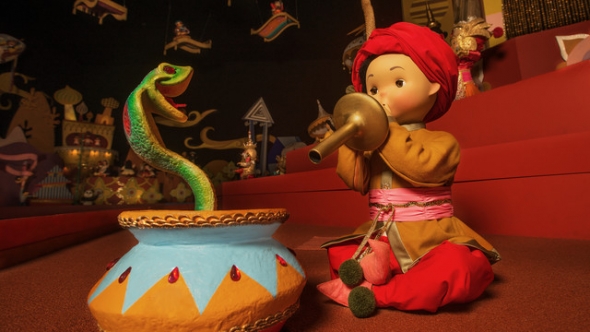
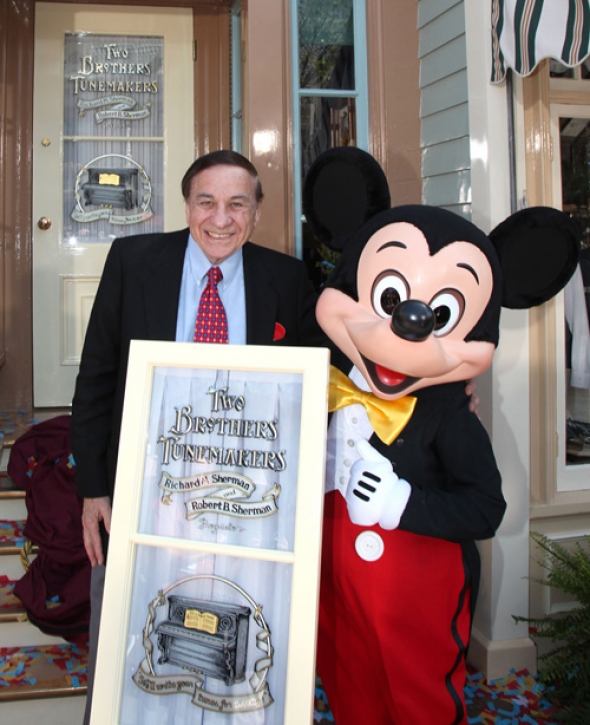
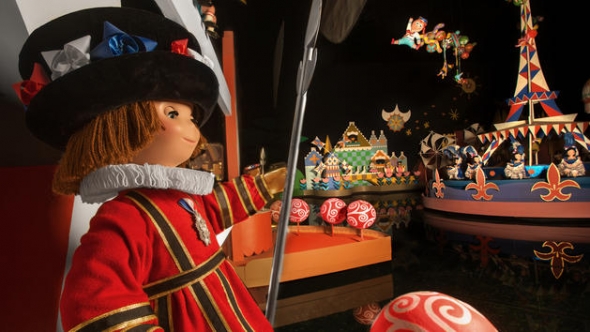
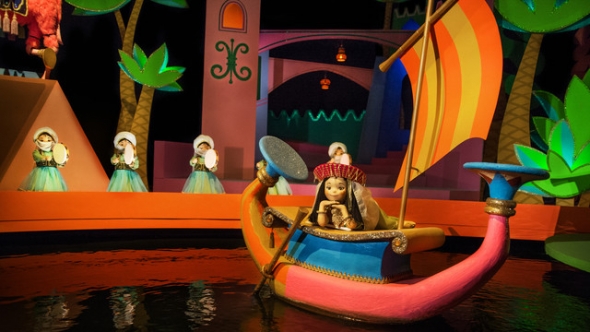
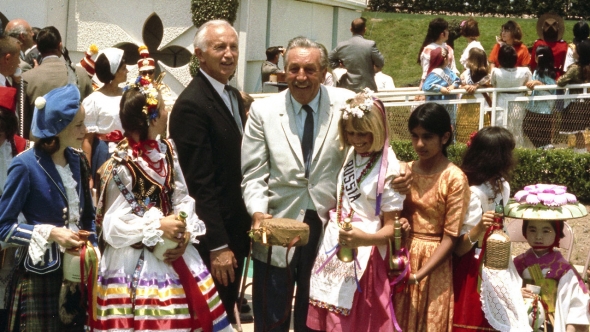

Comments
Really? There's different background music? Can you please give some examples? This sounds interesting!
Another great article but it could really be expanded. You left out Journey to Imagination (the original ride), the Country Bear Jamboree, Wishes, Main Street Electrical Parade, Even how the background music changes depending on where you are and what time of day it is. Disney has mastered the art of injecting music into your whole experience.
I agree with all of these, although I'm also wondering how Grim Grinning Ghosts came to be as well.
Believe it or not, one of my favourite attraction pieces is the music when riding the Soarin' rides. I was very happy when Soarin' Around the World opened and braught back the main melodical hook of that composition. Add to that the original version was created by Jerry Goldsmith, which would explain why it sounds so grand in nature and just... works, espeically that fanfair refrain that plays near the beginning, as I like to call it, the main melodical hook.